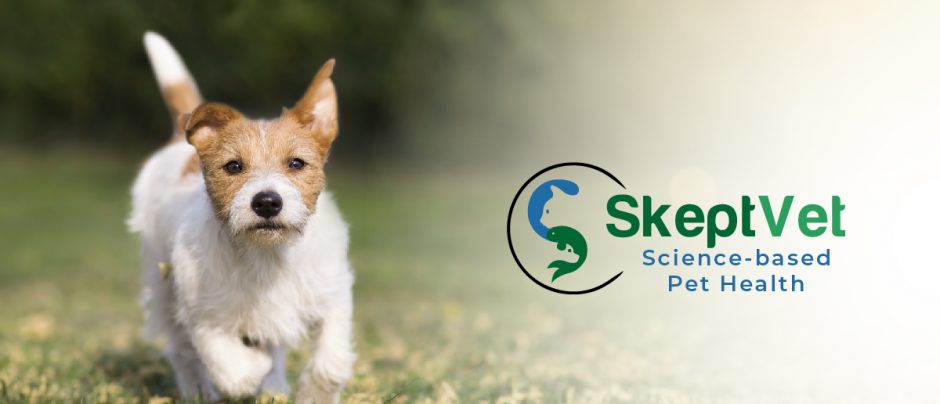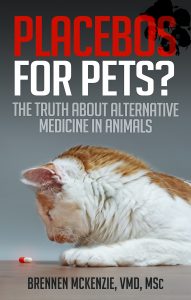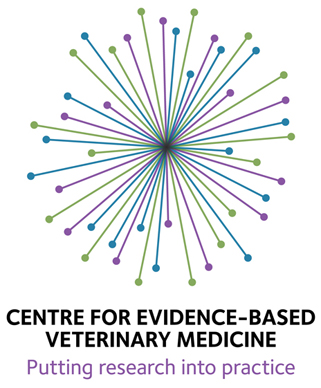This is my last piece for Veterinary Practice News as the EBVM columnist. I chose to focus on the open veterinary hospital model, which I have been a proponent of for many years.
There is widespread recognition in veterinary medicine of the critical role clients and client communication play in patient care. Informed consent and establishing a veterinarian-client-patient relationship (VCPR) are typically legal prerequisites for providing veterinary services. On a more pragmatic level, we cannot care for our patients effectively without the understanding and engagement of their owners, as well as their consent.
Many strategies have been investigated and promoted to improve client communication,1,2 generally with the aim of improving acceptance of veterinary recommendations. In addition to specific communication strategies, establishing an effective VCPR requires building rapport and trust between pet owners and veterinarians. This is especially true for managing complex, ongoing medical problems.
One approach I have experienced and believe deserves greater study and broader adoption, is the open-hospital model.3For most of my career, I have worked in a hospital that encourages clients to be with their pet at any time while they are in our care, whether in the exam room for a routine checkup, hospitalized in the ICU, and even during dentistry, surgery, or other invasive procedures.
Some are horrified
I am no longer surprised, albeit still amused, by the horror that many of my colleagues display when I tell them about our open-hospital policy. The idea of drawing blood or vaccinating a patient with the owner present, much less allowing them to observe us performing surgery, is sometimes seen as dangerous, if not completely insane.
When exploring this response, the justifications for the horror usually involve concerns about negative client reactions, from fainting at the sight of blood to misperceiving restraint or invasive procedures as abuse and deciding to sue. Veterinarians and veterinary nurses also worry their own anxiety about being watched by owners will degrade their performance, particularly for technical procedures. Legal liability for owner injury is also a common concern.
All of these issues are, of course, real potential negative consequences of having clients accompany their pets through all stages of veterinary care. My own experience, however, suggests these are rare outcomes that are more than balanced by the benefits of an open-hospital model. Appropriate policies and safeguards can minimize the risks and maximize the benefits of this approach.
The benefits pertain to both owners and patients. There is some evidence that dogs, for example, are more relaxed and compliant during veterinary treatment when their owners are present.4,5 The fact our patients, a social species with close relationships to individual humans, should take comfort in the presence of their human caregivers is not surprising. Certainly, we take such comfort from the presence of family members when we receive medical care.
Our clients also benefit from being able to be present for all aspects of their pets’ care. This enhances their trust and confidence in our treatment of their pets by taking away the uncomfortable sense we are doing scary and painful things to their companions “in the back.” Clients can see how much we care for our patients, how we try to comfort them, and treat them well, even when they are fractious. It is also often easier to explain the nature of a health problem when the client can see the images or the lesions directly. Being a part of the process makes clients feel more like the partners they should be in the medical care given to their pets, and it helps build familiarity and relationships between clients and the veterinary team.
There are benefits to veterinary professionals, as well, from having clients accompany their pets in the hospital. Watching the veterinary team provide care illustrates the difficulty and complexity of what we do, and helps show how much skill is required and why we are justified in charging appropriately for our services. It facilitates communication and relationship building. It also helps encourage consistently compassionate and professional behavior on our part, knowing our words and actions will be seen and interpreted not just by our colleagues, but by laypeople.
As for the anxieties my colleagues often express, again, my own experience of 20 years in an open hospital does not support them. While some clients choose not to watch routine procedures, and most have no interest in seeing their pets have surgery, the vast majority do like to be with their pets during routine exams and when they are hospitalized in our ICU. Cases in which the behavior of the owner interferes with our work are extremely rare, and it is always an option to ask an owner to leave if they do so.
When serious adverse events have occurred with an owner present, from extravasation of chemotherapy drugs to unexpected bleeding during surgery, and even cardiopulmonary arrest, owners have always expressed appreciation for the effort and professionalism of the veterinary team in responding and doing everything possible to help the patient. Without exception, all of the clients I have had over the years who responded to negative outcomes by accusing the team of negligence or incompetence have been clients who were not present to see the care given for themselves.
More studies needed
Of course, anecdotal experience is never a very reliable basis for judging any medical practice. There is very little research evaluating the pros and cons of an open-hospital policy. Studies in human medicine consistently show people want to be with their family members undergoing medical care, and parents in particular see this as an obligation and a right. The limited literature available seems to support the impression that while the idea of this approach engenders some anxiety in healthcare workers, in practice it benefits patients and their family members and does not impede or degrade the care provided.6–8
Even studies of intensive medical procedures, such as family-witnessed CPR, show being present for this type of care has psychological benefits for the family, improves the relationship between family members and the healthcare team, and does not interfere with appropriate treatment of patients.6,9,10 The patient-centered model of care currently widely employed in human medicine recognizes such a policy is an important element of such care and has more benefits than risks. A few studies in veterinary medicine also show that owner-witnessed CPR has positive effects on the owners’ perception of the care given to their pets.11
During the COVID pandemic, our hospital endured the natural experiment of having to suspend our open-hospital policy and keep owners outside of the building while treating their pets. This was universally regarded as more difficult and less satisfactory by both owners and the veterinary team. Communication was more frustrating, patients were often more stressed and less cooperative, and the trust and rapport necessary for an effective functioning VCPR was weakened. While there were some minor benefits to not being constantly observed by clients, these were thoroughly outweighed by the disadvantages of this more distanced arrangement. While the processes necessary during a pandemic do not, of course, fairly represent the normal operations of a hospital without an open-access policy, they did give our team a chance to reflect on the open-hospital experience, and we unhesitatingly and enthusiastically returned to this approach as soon as we safely could.
Bottom line
There is limited evidence objectively evaluating the risks and benefits of allowing pet owners full access to all aspects of their animal companions’ care. Limited relevant research in both human and veterinary medicine suggests caregivers want such access; it is comforting for patients and family members, it supports stronger rapport and communication between the healthcare team and the family, and it does not impede care.
My own personal experience, and that of nearly all the veterinarians and nurses I have worked with in an open-hospital setting, is overwhelmingly positive. There are some potential risks, but these can be mitigated by appropriate policies and good communication. The benefits, to clients, patients, and staff, seem to greatly outweigh these risks. The resistance to this model is based on anxiety and unfamiliarity more than on a realistic understanding of the risks, and I strongly encourage my colleagues to consider a more client-centered care model.
And now, the news
Sadly, I must announce that I am stepping down from both of my EBVM columns here at VPNPlus+ and Veterinary Practice News. It has been my great pleasure to share my passion for evidence-based veterinary medicine and to interact with the outstanding editors and the readers of VPN. I will continue to carry the banner of EBVM into my new work studying aging in dogs, and I look forward to future opportunities to share that work with you.
Brennen McKenzie, MA, MSc, VMD, cVMA, discovered evidence-based veterinary medicine after attending the University of Pennsylvania School of Veterinary Medicine and working as a small animal general practice veterinarian. He has served as president of the Evidence-Based Veterinary Medicine Association and reaches out to the public through his SkeptVet blog, the Science-Based Medicine blog, and more. He is certified in medical acupuncture for veterinarians. Columnists’ opinions do not necessarily reflect those of VPN Plus+.
References
- PUN JKH. An integrated review of the role of communication in veterinary clinical practice. BMC Vet Res. 2020;16(1):394. doi:10.1186/s12917-020-02558-2.
- Bard AM, Main DCJ, Haase AM, Whay HR, Roe EJ, Reyher KK. The future of veterinary communication: Partnership or persuasion? A qualitative investigation of veterinary communication in the pursuit of client behaviour change. Weary D, ed. PLoS One. 2017;12(3):e0171380. doi:10.1371/journal.pone.0171380.
- Yagi K. The Open Practice & Client Presence During Procedures. Clin Br. 2017.
- Stellato AC, Dewey CE, Widowski TM, Niel L. Evaluation of associations between owner presence and indicators of fear in dogs during routine veterinary examinations. J Am Vet Med Assoc. 2020;257(10):1031-1040. doi:10.2460/javma.2020.257.10.1031.
- Girault C, Priymenko N, Helsly M, Duranton C, Gaunet F. Dog behaviours in veterinary consultations: Part 1. Effect of the owner’s presence or absence. Vet J. 2022;280:105788. doi:10.1016/j.tvjl.2022.105788.
- Toronto CE, LaRocco SA. Family perception of and experience with family presence during cardiopulmonary resuscitation: An integrative review. J Clin Nurs. 2019;28(1-2):32-46. doi:10.1111/jocn.14649.
- McCabe M. Impact of Family Presence in the Healthcare Setting. 2014. https://core.ac.uk/download/pdf/58825534.pdf. Accessed July 22, 2022.
- Beesley SJ, Hopkins RO, Francis L, et al. Let Them In: Family Presence during Intensive Care Unit Procedures. Ann Am Thorac Soc. 2016;13(7):1155-1159. doi:10.1513/AnnalsATS.201511-754OI.
- Mark K. Family presence during paediatric resuscitation and invasive procedures: the parental experience: An integrative review: An integrative review. Scand J Caring Sci. 2021;35(1):20-36. doi:10.1111/scs.12829.
- Dainty KN, Atkins DL, Breckwoldt J, et al. Family presence during resuscitation in paediatric and neonatal cardiac arrest: A systematic review. Resuscitation. 2021;162:20-34. doi:10.1016/j.resuscitation.2021.01.017.
- Gradilla SM, Balakrishnan A, Silverstein DC, Pratt CL, Fletcher DJ, Wolf JM. Owner experiences with and perceptions of owner?witnessed CPR in veterinary medicine. J Vet Emerg Crit Care. 2022;32(3):322-333. doi:10.1111/vec.13180.










Thank you, Brennen. I suffered informed owner consent issues that contributed to avoidable harms of my dog and am still crusading for change a decade later, so I very much appreciate your swan song. And, I will miss your EBVM columns in VPN. Best wishes in your new venture!
Love your work and will miss your column. You are a awesome Veterinarian. I am lucky to have been one of your Clients.
Will you occasionally publish new pieces through this blog in the future?
Beautifully written and clearly presented, as always, Brennen. Thank you so much for this piece and thank you also for the many excellent articles that you have published with VPN and Veterinary Practice News. Hoping that you continue to write your blog (and other articles?) as your knowledge and your consistent adherence to the principles of scientific inquiry are such a breath of fresh air and so incredibly valuable.
A heartfelt thanks for your columns over the years.
I’ve enjoyed them and felt I learned a great deal about some of the best ways to help our dogs.
Best of luck in the future.
I do hope there are ways to continue to follow your work.
Ed
i have a memory of spending the night in a childrens hospital without my mom. We either could not afford a room where mom could stay overnight or mom and dad would not spend the money for the extra private room or thats how all kids were hospitalized then. I remember rows of beds alone at night with kids in them my age some of them crying. I also have a memory as a vet first year out of school of pulling 12 dead english bull dog pups out of a bitch. It was the middle of the night and i had the breeder in the surgery room to help. Breeder went into grief mode like her children had just died. Breeder at least was there to see what happened and could not make up a story in her mind it was my surgical skills that killed the pups. Good medicine needs to be cost effective. Pets with health insurance get more care but we need to make sure that the extra care is cost effective? Owners often can help eliminate the need for someone to help you treat the pet. That could help save money.
I will definitely keep writing here, as well as on the Loyal blog, and I may occasionally submit pieces to VPN and DVM360, time permitting. 🙂
Pingback: ? El Hospital Veterinario Abierto- Y un Adiós a VPN |
vin has a interesting article on “open hospital” this morning with a lot of testimonials and a story about the Adobe’s hospital. see
https://news.vin.com/default.aspx?pid=210&Id=11151292&f5=1
Wonder how we can “measure” all this. As a ebm preacher I’m not going to hold my breath for a randomized controlled long term result trial. The vin open hospital article mentions vets who come to the house. I remember when our family MD came to our house. Vets doing home visit care with access and privileges to a open hospital sounds like something that might be worth talking about.
As a pet owner, I wish that more vets had open hospital practices. As much as is possible, I stay with my pets, but alas, only one vet (who was also an agility friend) allowed me ‘in the back”. My then dog preferred me to be there. I appreciate your advocating an open hospital practice.
In years past I enjoyed access to an open veterinary hospital, and a wonderful mobile vet, who did simple procedures and euthanasia in the home. Can’t find the equivalent in my new location. It’s so awful to be treated as someone who can’t be trusted to watch, or to comfort a loved companion in a stressful situation. Not to mention the good feelings of helping to stimulate puppies after a caesarean section with in which 11 puppies survived.
Thanks for your efforts to educate your colleagues.
I wish there were an open vet in the Kansas City area. Do you (or any of your readers) know of someone? Or a recommended mobile vet in this area? Thank you for your most inspiring thinking over the years and best wishes for your continuing success.
Typos in previous comment are based on autocorrect not ignorance. If possible can you recommend an open vet in the Kansas City area, or a good mobile vet? Best to you, and thanks for your advice as always